My previous post, “Don’t Google ‘Spectacles,’ Google ‘Goggles’: The Nephite ‘Interpreters’ as a Book of Mormon Anachronism” (hereafter Part 1), raised the possibility that ancient Mesoamerican “goggles,” sometimes depicted as gear for both deities and humans, might have some relationship to the Nephite/Jaredite concept of mystic stones for revelatory purposes. The Nephite “interpreters” that were buried with the gold plates of the Book of Mormon were said to comprise two stones set in a silver frame that looked like “spectacles.” But perhaps “goggles” may be the right word to Google when determining whether the interpreters are anachronistic or not.
Adding to the images shown in Part 1, here’s a relic found in Veracruz State in Mexico, as shown at Mesoweb.com, an “enormous terracotta brazier [that] depicts a deity with the characteristic round goggles and protruding mouthpiece that appear so frequently in Teotihuacan and later became associated with Tláloc, a widespread Rain/War god in Post-Classic Mesoamerica.” Goggles seem to be most typically associated with the Aztec storm god, Tlaloc, also called the god of rain and a god of war.
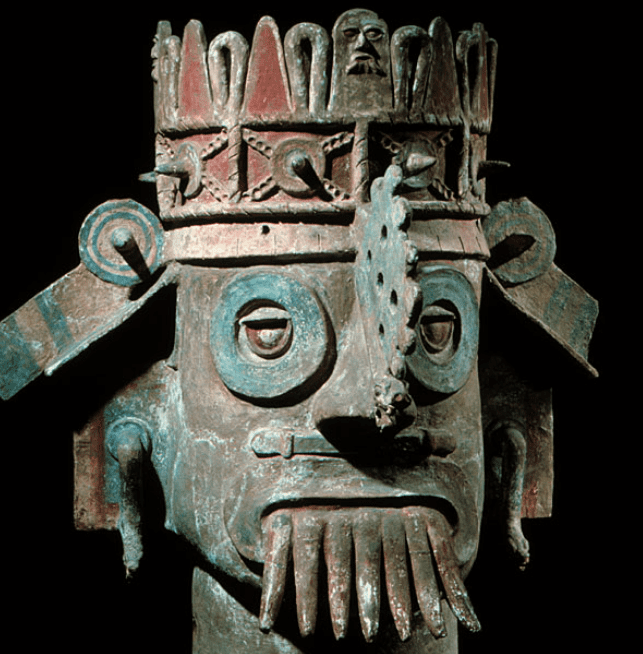
The importance of Tlaloc is made clear in Teotihuacan, where the Pyramid of Quetzalcoatl or Temple of the Feathered Serpent, the third largest of the great pyramids in Teotihuacan, features 365 heads that alternate between Quetzlcoatl and Tlaloc. The image below is available at Wikipedia’s article, “Temple of the Feathered Serpent.”
Here’s a detailed view of Tlaloc, which seems to have goggles on the forehead above the eyes:
Page 28 of the Aztecan Codex Borgia, housed at the Vatican Library, has several similar images of Tlaloc. Here is a detail, as labeled by Dr. Helen Burgos Ellis for the Khan Academy, showing the characteristic “goggle-eyes” of the god:
Humans are also depicted wearing goggles in Mesoamerican artifacts, with the goggles sometimes shown on the forehead (perhaps to more clearly show that there are sacred or mystic goggles present and not just big round eyes). Here’s one example, also from Mesoweb.com, dated to 300 to 550 A.D.:
Looking more closely at the goggles, it looks like they aren’t just circles stuck on the head, but have a supporting structure that disappears under the hair. If it were a cloth band, it would go over the hair. Could this be part of a solid frame, like those of modern spectacles, that can slide under the hair of the head? Looking closely, that might be the case. Color me speculative, but these could fool some of us modern viewers into thinking it looks somewhat like “spectacles” with a rigid frame.
Let’s turn again to the excellent 2018 article, “Goggles,” from the Hammocks and Ruins blog. Regarding the origins of Mesoamerican goggles, the roots go back to the Olmecs, whose chronology can fit with the Jaredite culture of the Book of Mormon:
Most images of a goggled sculpture refer to the Rain God Tláloc. His goggled mask stemmed initially from the Olmec sources, the first Mesoamerican civilisation, and moved simultaneously into the Teotihuacán, Maya and Zapotec. The mask from Veracruz is principally understood as a Jaguar being (worshipped first by the Olmecs); however there are also the overriding implications of the ‘Midnight Owl’. The Teotihuacános are thought to have derived the infamous feathered-serpent from the image of an owl fetching a serpent from a cave (with the ability to traverse its darkness). Mexican art historian, Miguel Covarrubias, demonstrated that later images of Quetzalcóatl, feathered serpents, and rain gods like the god Tláloc were all derived from the Olmec were-jaguar (half jaguar and half human being), who served also as a rain deity for the Olmecs, and was associated with sacrifice and the underworld (the Olmec rain deity did not wear goggles; that was added later by other Mesoamerican cultures).
So the concept of goggles in Mesoamerica goes back to the Olmecs, but became prominent among later Mesoamerican cultures, just as the “interpreters” began with the Jaredites, and became important among the leaders of the Nephite faith. They are connected to Quetzlcoatl and other Mesoamerican gods, but can be used by humans, and are related to the concept of an owl traversing the darkness and seeing through darkness. That seems consistent with Alma’s statement about the interpreters when they are passed to his son Helaman’s charge in Alma 37:
20 Therefore I command you, my son Helaman, that ye be diligent in fulfilling all my words, and that ye be diligent in keeping the commandments of God as they are written.
21 And now, I will speak unto you concerning those twenty-four plates, that ye keep them, that the mysteries and the works of darkness, and their secret works, or the secret works of those people who have been destroyed, may be made manifest unto this people; yea, all their murders, and robbings, and their plunderings, and all their wickedness and abominations, may be made manifest unto this people; yea, and that ye preserve these interpreters.
22 For behold, the Lord saw that his people began to work in darkness, yea, work secret murders and abominations; therefore the Lord said, if they did not repent they should be destroyed from off the face of the earth.
23 And the Lord said: I will prepare unto my servant Gazelem, a stone, which shall shine forth in darkness unto light, that I may discover unto my people who serve me, that I may discover unto them the works of their brethren, yea, their secret works, their works of darkness, and their wickedness and abominations.
But it’s earlier in Mosiah 28 where we get a description of these ancient interpreters:
10 Now king Mosiah had no one to confer the kingdom upon, for there was not any of his sons who would accept of the kingdom.
11 Therefore he took the records which were engraven on the plates of brass, and also the plates of Nephi, and all the things which he had kept and preserved according to the commandments of God, after having translated and caused to be written the records which were on the plates of gold which had been found by the people of Limhi, which were delivered to him by the hand of Limhi;
12 And this he did because of the great anxiety of his people; for they were desirous beyond measure to know concerning those people who had been destroyed.
13 And now he translated them by the means of those two stones which were fastened into the two rims of a bow.
14 Now these things were prepared from the beginning, and were handed down from generation to generation, for the purpose of interpreting languages;
15 And they have been kept and preserved by the hand of the Lord, that he should discover to every creature who should possess the land the iniquities and abominations of his people;
16 And whosoever has these things is called seer, after the manner of old times.
Two stones fastened between the rims of a bow: that sounds like a rigid bow, or a frame of some kind. Could it fit on the head as shown in the image above of the human with goggles on his forehead?
The Hammock and Ruins article also gives an example of a Mixtec mask with goggle-eyes that could have been worn in rituals by a priest. They also observe the close relationship between Tlaloc and Quetzalcoatl, in which Tláloc in at leat one case “acts as Quetzalcóatl’s avatar, the feathered serpent…. Scholar Cecelia Klein has suggested that the ringed eyes of Tláloc refer to a mirror, which represents fire or water, which are other attributes associated with the Feathered Serpent.”
Reviewing the symbolism of the googles covered in the article, the author states:
So the symbolism identified so far is the social status, star (deity), water (symbol of the underworld), owl (ability to see in the dark underworld). Our ball player example fits the bill in that sense as well. The ancient ball game (invented by the Olmecs and adopted by the whole of Mesoamerica) was seen as a struggle between day and night, and a battle between life and death. Ball game courts were considered portals to the underworld. Through the game, the players (including the kings) confronted the forces of the underworld to obtain rebirth and fertility. By playing the game, they symbolically entered the underworld to match themselves against its leaders, to defeat death and recreate life. (I deal with this topic in more detail in my post Ball Players.) In the underworld, they would have needed the owl’s ability to traverse through darkness, hence the use of the goggles. So it seems all the symbolisms are connected with each other.
Some of these concepts may relate to the Book of Mormon teachings on the interpreters (see above), which explain that the interpreters not only help bring revelation/light out of darkness, but help in overcoming and defeating the works of darkness pursued by the Adversary and his followers.
The role of goggles in Mesoamerican lore covers multiple cultures and many centuries, so there’s not one simple idea to capture it all. But there are some potential overlaps with the Book of Mormon, enough to wonder if either Mesoamerican goggle themes might have influenced some Jaredite prophet to fashion a goggle-like device to hold the sacred revelatory stones he used, or if the use of such a tool by Jaredite and Nephite seers might have inspired related practices and themes among Mesoamerican neighbors. Your thoughts?
If nothing else, the next time someone says that Joseph’s “spectacles” from ancient American were a ridiculous anachronism, you can admit that they are absolutely right — based on what scholars understood in Joseph’s day. But in terms of what we are learning today about ancient Mesoamerica, we can at least say that sacred “goggles” worn by priests and gods were known in ancient Mesoamerica, and theoretically could have some relationship with the Nephite and Jaredite interpreters. That’s still speculative, but does suggest that Nephite “interpreters”/”spectacles” might not be as ridiculous as once thought.

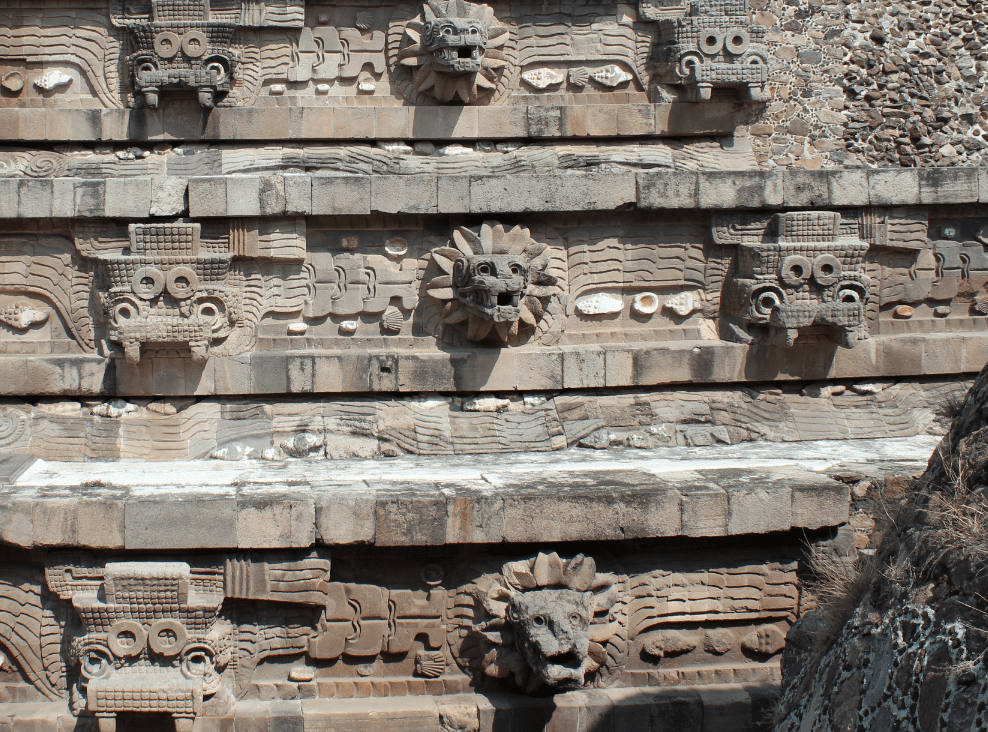
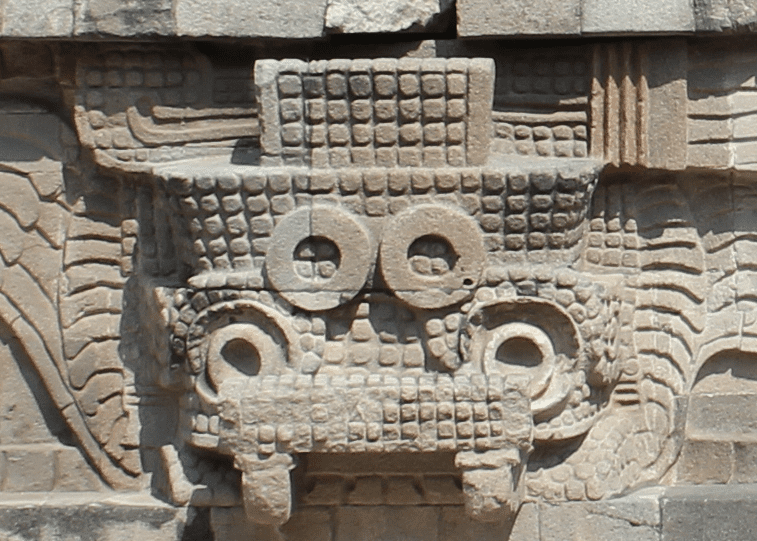
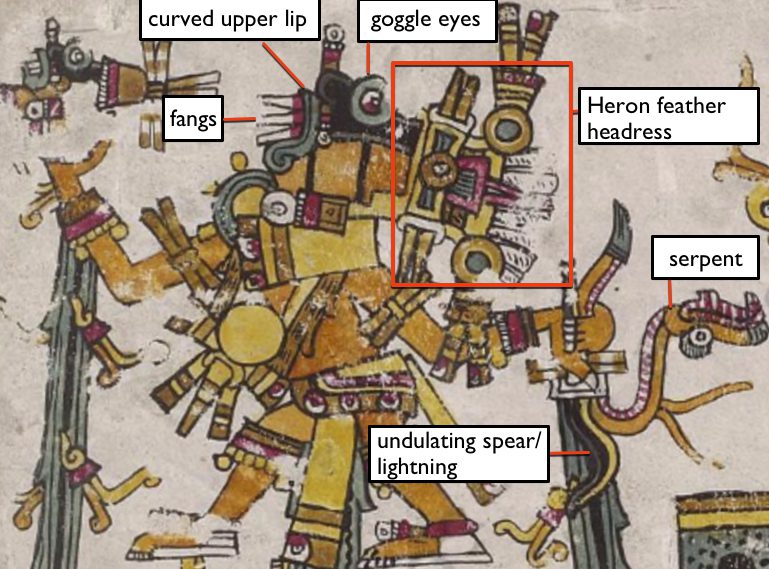
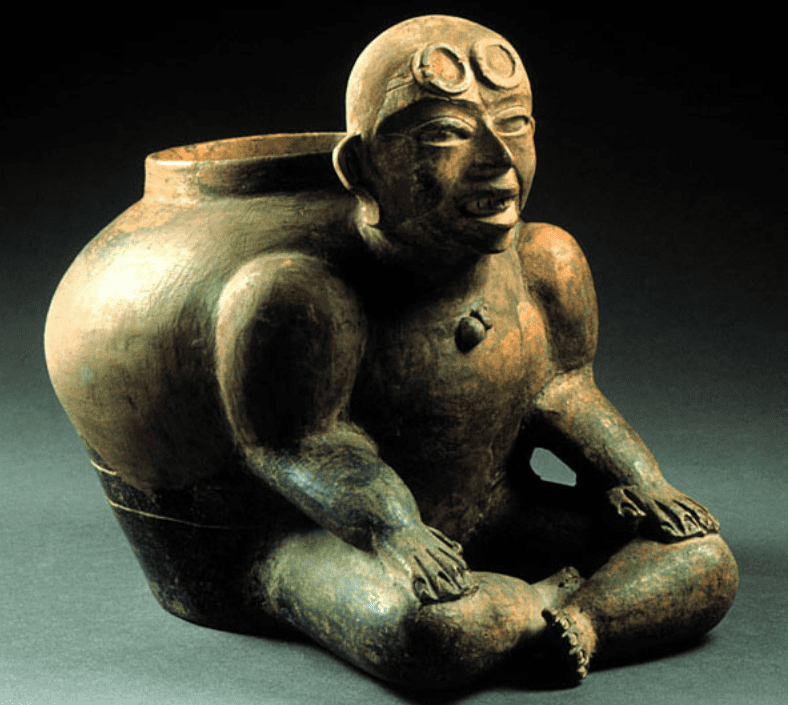
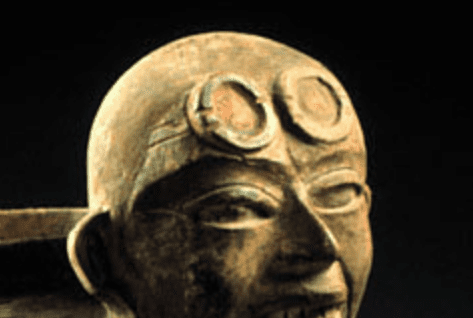
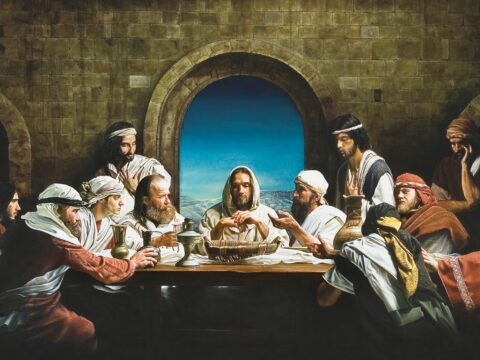

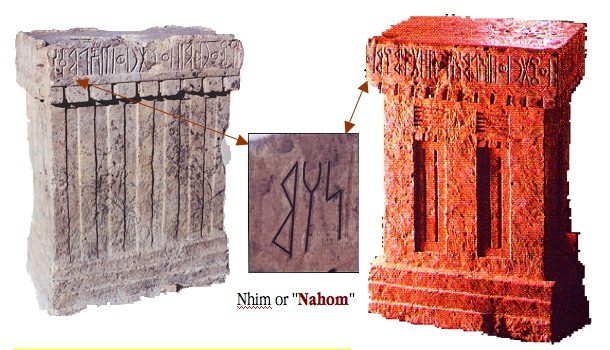







I'm still struggling to understand how anyone could grasp as such weak straws. I'd say you should be embarrassed for yourself, Jeff, but I don't think you have it in you. No sense of dignity at all. Who could possibly believe the leaps you've made here?
As the youth of today would say, "this should have stayed in drafts."
Spectacles, goggles — quite an embarrassing leap. Can you add some detail to your outrage?
Where’s the bow for the goggles?
Isn’t there a difference between symbols (goggles to imitate the owl) and functional instruments? The claim is that the “seers” were used to interpret things.
Jeff, you always play this card. The "play dumb and ask a follow up question" card. Allow me to explain it in simple terms:
No one outside the small circle of Mormon apologists believes there's actually a connection between ancient American civilizations and the Jaredites from the Book of Mormon. Most members don't care about this sort of "evidence" nowadays. The ones who have, like me, have done research into the Book of Mormon origins and quickly realized how obviously false and fabricated it all is. To zero in on one single word, "spectacles", and then attempt to draw a line to some sculptures with "goggles" on them is utterly ridiculous. You may as well find the word earrings or hat or helmet and then jump to the same conclusion.
And please, "outrage"? Way to poison the well, yet again.
Anon 12:03 –
This has been pointed out to Jeff endlessly.
He cannot call something a "connection" with describing what is a coincidence.
He cannot say there is "enough" for "speculative possibility" (whatever that is) without describing what is not enough.
He cannot say who is a "prophet" without describing who is a false prophet.
Never answering, he resorts to to his childhood, indoctrinated persecution complex, accusing others of being "outraged" with "unsupported dismissals" etc, etc, etc.
You don't get a sense of outrage or strong indignation in the comment I was responding to? Really? There's some emotion connected with those words: "…how anyone could grasp as such weak straws… you should be embarrassed for yourself… No sense of dignity at all. Who could possibly believe the leaps you've made here?"
"Outrage" has a dictionary definition: "an extremely strong reaction of anger, shock, or indignation." OK, one may quibble over whether this was just a very strong reaction versus an extremely strong reaction, but either way, it's not "poisoning the well" to note the strong indignation.
"Jeff, you always play this card. The "play dumb and ask a follow up question" card.
What are you talking about? Where am I playing dumb? Believe it or not, I'm usually trying to play smart. And what's the objection to asking questions? That's the basis of scientific progress and innovation in any field — though for those possessed by the mentality of some movements these days, asking any questions seems to be the ultimate evil.
You then go on to explain that anything said to defend the Book of Mormon is ridiculous because everyone besides a few of us troglodytes has already made up their mind that the Book of Mormon is false. You claim you've done research and concluded that it was obviously false. Can you tell me, then, what is the strongest evidence for its authenticity and why that evidence is not meaningful? I don't know your story, but for many making similar claims, the story is that they read some skewed critical blogs or websites that mocked the Book of Mormon, but they have not seriously studied the book or the significant evidences of authenticity, and often can't describe what the many positive evidences are or at best mischaracterize them severely.
The goggles issue is not an argument for proof of the divinity of the Book of Mormon. it's a response to a common allegation that the spectacles/interpreters mentioned in the text and received by Joseph Smith with the plates are impossible to have been known in ancient America. That argument needs to be considered in light of the fact that sacred goggles played a widespread role in Mesoamerican culture and Mesoamerica is what most LDS scholars who have seriously studied the Book of Mormon feel is the best candidate for the New World setting of the Book of Mormon.
The critics here are arguing that there is a ridiculous leap being made in relating ancient Mesoamerican "goggles" to what modern witnesses described as "spectacles". Really?? The goggles on some images look a lot like spectacles to me. Can you explain why there can be no apparent relationship in form or function between the mystical Nephite "interpreters" that looked like "spectacles" and mystical Mesoamerican "goggles" worn over the eyes by priests and gods? What's so outrageous/shocking/outlandish/ridiculous about that? Your belief that the Book of Mormon is not true does not provide a substantive answer to this question. A more interesting question is hypothetical and is also not answered by just saying "everyone knows" the Book of Mormon is fake. The question is this: "If there were Jaredites and Nephites in ancient Mesoamerica who did have a tradition about sacred interpreters made from mystical stones set in a frame like spectacles, could this tradition and the artifacts associated with it have influenced Mesoamerican culture, or could Mesoamerican culture with its goggle-eyed priests and gods have influenced the way Jaredite or Nephite prophets choose to frame or fashion the revelatory tool they called the "interpreters"?
You again make an interesting assertion: "To zero in on one single word, 'spectacles', and then attempt to draw a line to some sculptures with 'goggles' on them is utterly ridiculous." Excuse me, but the alleged anachronism I'm dealing with comes from critics "zeroing in" on the word "spectacles" and then saying that they are a late invention and thus Joseph's story is obviously fake. This may have been one of the evidences that has led you or others in the past to say it's obviously fake. I'm responding to that argument, where the "zeroing in" has already been done. So in light of the claim that "spectacles" in ancient America are "obviously false," why is it ridiculous to say, "Wait a minute, it turns out that there was something rather similar, but usually called 'goggles' in the literature. And sometimes worn by gods and humans in a ritual context, with functions that in some cases may relate to the Book of Mormon devices, bringing light and truth from darkness or enabling sacred sight in darkness (like Joseph looking into the darkness in a hat and seeing words dictated to his scribes). That doesn't prove the Book of Mormon is true, but weakens a common argument about one of the first alleged anachronisms that arise in the Book of Mormon story. Like a number of other anachronisms (e.g., ancient writing on gold plates), there's evidence that it may not be as ridiculous as once claimed. That's all.
Anon @7:51 said: He cannot call something a "connection" with describing what is a coincidence.
He cannot say there is "enough" for "speculative possibility" (whatever that is) without describing what is not enough….
Never answering, he resorts to to his childhood, indoctrinated persecution complex, accusing others of being "outraged" with "unsupported dismissals" etc, etc, etc.
Ad hominem arguments have their place and can be really cute, but I would like to encourage you to make a substantive argument rather than just listing my many faults. I'm also curious to know what you have uncovered about my childhood that I must resort to instead of answering anything. Honestly, I thought this whole post was about answering, and I'm trying hard to answer what y'all are throwing out. But I'm not sure how to answer the claim that I'm never answering when I spend quite a lot of time here at least trying to answer, and instead of answers to my comments, I get allegations about my failures, my childhood, my lack of any sense of dignity, and, of course, the standard mantra of "ridiculous, ridculous, ridiculous." Those aren't even arguments.
My suggestion is to point out the specific issues where I have blundered, explain why with substantiation of some kind, use some logic rather than name calling, and then, if you must, give my your list of ad hominem slurs as your well-deserved victory dance at the end once you've demonstrated that you understand the subject matter of the post and have a meaningful refutation. But that's just my suggestion. Don't mean to cramp anyone's style.
Jeff,
Keep up the great work! Those who believe without an open mind only and a degree of humility only see things that support their current belief. That applies to everyone including believers. Only the humble and open minded can agree (or disagree) without getting emotional.
I see this as very interesting but it certainly doesn't prove anything in my mind but to your point is certainly should make the open minded pause and reflect and certainly not dismiss the "spectacle"
Sign seekers will never get their sign and always be frustrated until they develop a genuine spiritual relationship with God (purpose of life)
This comment has been removed by a blog administrator.
One good reason to continue reading Jeff’s blog is I often learn about new things. Something I learned about today is the ancient American “ball game” which was played for thousands of years by many different civilizations.
Jeff always brags about the depth and complexity of the BoM in describing Hebrew and ancient American culture. Those familiar with the BoM, please compare its societal descriptions to the following description of the game that was a large part of multiple American societies for thousands of years. It was so much a part of the society, that multiple courts can be found in the ruins of most major cities from South America to North America (even the US). It was not only a game, but religious symbolism was an integral part of the play and outcome. See how much “speculative possibility” there is in the relationship of the two religions—known ancient American religious tradition vs BoM religious tradition.
“Here is a brief summary: The universe has passed through various cycles of creation and destruction (by floods and other disasters). Each successive world was peopled by imperfect beings (e.g. made of clay), the last of whom were wooden idols. But the gods were not happy with them as the wooden people could walk and talk but their souls were not perfect because they forgot to worship their gods. Finally, the Creator God created perfect people from maize and gave them his own blood (this blood had to be returned to him, hence the bloodletting rituals and those of human sacrifice from then on).
To the old creator was born a pair of twins, Hun Hunahpú (the Maize God) and Vucub Hunahpú. One day they annoyed the gods of the underworld with their noisy ball playing and the two brothers were tricked into descending into Xibalba (the underworld) where they were challenged to a ball game. Losing the game, Hun Hunahpú had his head cut off; a foretaste of what would become common practice for players. His own twins, Hunahpú (the second) and Xbalanqué, were also tricked into playing the game against the lords of the underworld. At some point in the game one of the twin brothers lost his head and the remaining twin won only by playing with his decapitated head, thus tricking the underworld lords (needless to say that playing with a human skull is another practice that has been taken from this creation myth). In the end, the twins outwitted the lords and ascended to the night sky as constellations. So the bottom line is that they overcame death and became demi-gods themselves. The play provided a passage between the realm of the human and the realm of the gods.
Furthermore, while in the underworld, the twins resurrected their father, the Maize God. He journeyed back to life through the Xibalbá waters (basically a cave with its waters was the underworld), he finally emerged through a crack in the earth's surface, pictured as the shell of a turtle. And this is the reason why the majority of the ball courts have the shape of a split turtle shell. Thus, the game symbolises regeneration and life (and kings thereafter had a symbol of their rebirth as the Maize God even on their sarcophagus, like king Pakal the Great in Palenque). Often the rings on the ball court are symbolic in that sense too; for example the rings in Chichén Itzá have carved images of the feathered serpent god Kukulkán (this deity represents a duality: being feathered represents its divine ability to fly to reach the skies and being a serpent represents the ability to creep on the ground among other animals of the Earth).
In some places, the regeneration symbol was taken further in terms of extending it to food, mainly maize. At El Tajín, the ballplayer sacrifice ensures the renewal of pulque (an alcoholic maguey beverage). In the Chichén Itzá ball court reliefs, seven floods of blood flowing from the necks of decapitated players are interpreted in various ways. Some researchers believe that the blood is being transformed into the Tree of Life (thus symbolising the rebirth of the player); others believe it is seven snakes, a symbol of rebirth, and yet others see the transformation of blood into flowers, vegetal growth, and maize. Decapitation is thus linked with maize cultivation and the game can then be interpreted as a fertility ritual. Through the game, the king confronts the forces of the underworld to obtain fertility, and the rebirth of vegetation. It was the king's duty (his job) to provide fertility to his people (otherwise he could face a revolt).”
https://www.hammocksandruins.com/mysteries-articles/ballplayers
Jeff, since you asked, here are but a few of the things that tell me the Book of Mormon is false. Again, these are just a few of the things that led me out of the church. I don't want to be accused of resorting to a Big List fallacy (which you've pointed to incorrectly here so often), so this will be brief:
Proper names and locations in the Book of Mormon have direct real world equivalents in Joseph Smith's time that he an his co-authors would have been very familiar with. Dozens of examples. Morianton and Moravianton, Onidah and Oneida, Lehi and Lehigh, Tecumseh and Teancum, and on and on and on.
The pre-existence of the Tree of Life analogy as a so-called vision that Joseph Smith, Sr would sell to anyone willing to pay.
The equivalents in Masonic folklore with the Book of Mormon origin story.
The changing of the Book of Mormon origin story and the first vision story over time, tiny detail by tiny detail.
The affidavit of Lucy Harris, which I would encourage everyone to read on their own.
The presence of anachronisms in the text. The name Timothy. Words of prophets yet unborn. Mistranslations of the bible that are traceable to the source texts.
Inconsistent and wishy-washy doctrines, especially regarding the trinity and the soul of man.
Anachronistic concern among ancient Americans for things that have only really been argued in such detail and in such order during Joseph Smith's time.
To say nothing of Joseph Smith's "fruits", all of which attest to the fact that his book of scripture was fabricated to turn a buck. For instance: the repeated and trustworthy reports of the brutalities against women committed by Joseph, which then went on to infect other members of his group. Polyandry under coercion is brutality, by the way. I dare you to say otherwise.
And the list goes on. Shall I continue, or do you want to keep stretching that tenuous connection between spectacles and goggles, based on an argument literally NO ONE is making?
This comment has been removed by a blog administrator.
Thanks for the interesting post, Jeff. I always enjoy reading your articles.
I thought I'd also add a short response to one of the many comments criticizing you and LDS beliefs in general:
Mention is made of the Tilma of Juan Diego. Not being very well versed in Latin American Catholic tradition, I was not familiar with this particular tradition and belief and the stories and tradition associated with it. Based on what little I can glean on the internet, I am open to the idea that Juan Diego may have indeed had a vision of Mary, the mother of Jesus. I am also open to the idea that others throughout history, including this man, may have had visions and inspiration which helped them and the society and culture they were a part of, to improve their spirituality in a positive way. I don't see it as "all or nothing" as some might see such things. I think there have been inspired folks throughout human history who have helped their cultures in ways that God saw fit to reveal as much knowledge that a given society and culture was able to adapt to, often building on previous traditions and beliefs but in a more positive direction. I believe than many, if not all, of the world's religions were begun this way, though many of their beliefs have changed over time, if you look at the foundational beliefs, there are a lot of common threads throughout all the major world religions. Though I am LDS, and I believe that this faith has more of the truth in modern times than any other faith, that we don't have a monopoly on truth, and that much truth can be found in other faiths and beliefs as well, and in poetry, philosophy, etc., both in the present as well as in the past. I believe that folks can be divinely inspired no matter what their religion or lack thereof, past as well as present, though I do believe it's much easier to receive inspiration (and to be aware of it) when one is trying to follow the basic tenets of loving one's fellow beings and being a humble and kind person, and being open to divine inspiration by living in such a way to be worthy of it, and to be able to appreciate and acknowledge it when it does come. I also don't believe that it will come unless we show a willingness to listen to it, accept it, and live by it.
"to one of the many comments criticizing you and LDS beliefs in general"
It is a criticism, but you agree with it? ???
Anon 11:33
The Ball Game is fascinating. In addition, I love all the references to the Olympic Games in the New Testament. Paul describes them in such a way so as to really bring the Gospel front and center. Likewise, the descriptions of all the games in the Old Testament. I have them all in my closet set aside for FHE.
Steve
The ball game is incidental to the religious significance it celebrates. Compare it to the faith practices described in the BoM, as well as the Bible. The religious practices of rivals are often debunked in both. Do you note any discussion of infant baptism or how resurrection and judgement work in the descriptions above? What about anything close to the religious beliefs described above mentioned in the BoM? Perhaps an FHE session is in order to scour for proofs.
Jeff, thank you for your posts and your willingness to carry on despite the constant carping from Griffle and the other dwarves who seem to "have chosen cunning instead of belief."
If you have to choose belief that's sort of the issue isn't it? If you have to do it in spite of the persistent lack of proof or if you have to gin up logical absurdities that require mental gymnastics to shore up that belief, then how are you different from a battered wife who chooses to remain a punching bag?
To Anon 7:19 on 6/29:
I don't see this as a criticism:
"Juan Diego's Tilma, not just 11 witnesses, but billions, brought millions to Christ and conversion to Catholicism. No middle ground, either it is a fraud or it is what it claims to be. So which is it?"
One can be open to the idea that Juan Diego was visited by the Virgin Mary without rejecting the idea that Joseph Smith (along with others in history) also had visions exactly as they described. It doesn't need to be an 'either/or'. Juan Diego's vision was in 1531, about 300 years before the Latter Day Saint faith was founded. I think throughout history there have been inspired folks who have helped their fellow human beings by bringing divine inspiration to them. It appears that Juan's vision, real or not, helped bring many of the folks in Mexico to Catholicism and I don't see that as a bad thing. God helps people where they are and gives them what they are ready for at a given time in history, according to their environment and culture, etc.
You said you were responding to criticism of LDS beliefs. What criticism was it you were responding to then?
Phil writes, “Juan's vision, real or not, helped bring many of the folks in Mexico to Catholicism and I don't see that as a bad thing.” To this I would add that, for generations, the LDS Church considered the Catholic Church to be the “Church of the Devil, the Whore of All the Earth.” Ah, progress!
— OK
Phil I think you would have a very difficult time bringing the average Mormon, let alone Jeff, around to this open-minded view. The only authority they recognize is the one they're told to.
It is odd how often people attack members of The Church of Jesus Christ of Latter-day Saints as being close minded and overly determined to make their values normative and then these same people go on attacks in which they are very close minded and will only accept one possible meaning of works.
We see the same think in many refusing the consistent reading of Alma 3:5-6 proposed by Ethan Sproat that would suggest that the dark skins of the Lamanites were the skins they wore about their loins.
Sorry, John, but interpreting this:
“cause a skin of blackness to come upon them”
to mean this:
“cause them to wear black clothing”
is ludicrous. My saying so is not closed-mindedness, just literacy. (Well, maybe John’s mother used to tell him to put on his blue jacket by saying, “Johnny, it’s cold outside, so be sure to cause a coat of blueness to come upon you!”)
Next thing you know, people will start saying that this (from the Book of Moses):
“the seed of Cain were black”
is not just a tired rehashing of 19th-century Hamitic theory, but really means this:
“the seeds that Cain planted into the soil were black.”
Face it, guys, the Mormon scriptures were written by Joseph Smith and associates in the 19th century and they reflect the biases and concerns of that time, including its racial ideology.
— OK
Agreed. A more consistent reading would be to read it the way it was written:
“6 And the skins of the Lamanites were dark, according to the mark which was set upon their fathers, which was a curse upon them because of their transgression and their rebellion against their brethren“
“the Lord God set a mark upon them, yea, upon Laman and Lemuel, and also the sons of Ishmael, and Ishmaelitish women.
8 And this was done that their seed might be distinguished from the seed of their brethren.
9 And it came to pass that whosoever did mingle his seed with that of the Lamanites did bring the same curse upon his seed.“
Precisely, Anon 11:29. There’s simply no way this is about black loincloths rather than black skin. The color of one’s clothing is not inherited.
— OK
The Book of Mormon reports that the Nephites had apostatized from their religion and then they were essentially wiped out. We should not expect their religious practices, strongly opposed by others, to have survived in easily recognizable form. But it does report that their enemies had human sacrifice and idolatry. There is no reason why the details on this abominations would have been given in the text.
Mesoamerican ball games, while found in many parts and times of Mesoamerica, need not have been part of Nephite society or have been of interest to the prophets who wrote. Research on the diverse practices related to ball games suggest they were sometimes associated with human sacrifice, idolatry, or with gambling or other practices that Nephite writers might have found objectionable, including ritual torture and execution associated perhaps with military campaigns. Just as we would not expect modern General Conference talks to give us much insight into modern drinking games or binge drinking practices of modern US universities or details on the business models and lifestyles of pimps, gangsters, and drug lords, in spite of being widely celebrated in popular media, there may have been no motivation for Nephite prophets to tell us much about pagan practices they found offensive.
But do note that ball games did not occur uniformly across Mesoamerica. Much of what we know comes from sites dating to well after 400 A.D. Much of what we know about the game and its meaning comes from the Aztecs, whose views may not represent earlier cultures. See Stephen A. Kowalewski et al., "Pre-Hispanic Ballcourts from the Valley of Oaxaca, Mexico" in Vernon Scarorough and David Wilcox, eds., The Mesoamerican Ballgame (Tucson, AZ: Univ. of Arizona Press, 1991), particularly p. 25 (but also p. 42 on ritual torture). and Olivier de Montmollin, "A Regional Study of Classic Maya Ballcourts from the Upper Grijalva Basin, Chiapas, Mexico," Ancient Mesoamerica, Spring 1997, Vol. 8, No. 1 (Spring 1997), pp. 23-41, on the complex range of theories to explain what these games meant and why they were more common in some times and places than others.
Jeff, help me out here. It seems to me that on the one hand the Nephites/Lamanites were so few in number that their DNA is undetectable today, yet on the other hand their corrupted religious practices had a big influence on the sporting practices of the mighty Mesoamerican empires.
Do you see how … unlikely that seems? It’s like looking to today’s Baha’i faith for keys to understanding NFL football.
It seems to me that, just as LDS apologetics needs Book of Mormon translation to be both loose and tight at the same time, it also needs Nephite populations to be both tiny and huge. Can’t have these things both ways.
— OK
OK – Andrew said it best:
"I see a page here, "Shazer on Lehi's Trail: Perhaps More Interesting Than You Thought"
Reading this feels like reading a Star Trek blog. I've walked into a Trekkie convention. The guy Lindsay comes across to me like someone who is too smart for his own good. A rainman-like mind combined with boyish creativity and profound levels of ignorance. He ought to try writing fantasy novels and get paid for this type of work."
Cool post, Jeff. So many hostile anonymous critics, but they’re just making a spectacle of themselves. 🤓
Jeff 10:01 –
You see, there Jeff goes again. Dodging yet again and avoiding addressing those very basic, substantive questions that have been asked of you for decades. Decades of avoidance does indeed require a victory lap.
He cannot call something a "connection" without describing what is a coincidence. He never provides us the criteria for which is which.
He cannot say there is "enough" for "speculative possibility" (whatever that is) without describing what is not enough. He never provides us the criteria for which is which.
He cannot say who is a "prophet" without describing who is a false prophet. He never provides us the criteria for which is which.
Why don't we have "enough" for the History Channels "speculative possibility" to explore Joseph Smith's contact with Aliens?
Juan Diego's Tilma, not just 11 witnesses, but billions, brought millions to Christ and conversion to Catholicism. No middle ground, either it is a fraud or it is what it claims to be. So which is it?
Ignatius Donnelly's "evidences" for the Atlantis theories surpass Mormon Apologist Book of Mormon theories. Why should Donnelly be dismissed as unsound?
It is not ad hominem, according to Fairmormon it is motive investigation. Decades of verbosity, but always avoiding an answer to the most basic questions and complaining of ad hominem in order to continue avoiding an actual answer.
It is not an accident that Jeff has avoiding answering for decades. He knows the minute he answers what is a coincidence, what is not enough for speculation, what is a false prophet, why the Tilma is a fraud, and why Ignatius reasoning is unsound he will run into inconsistencies, contradictions, double standards.
This entire blog is a spectacle.
The stature appears to be wearing a backpack that wraps around the forehead instead of the shoulders. The same marks going under the hairline go around the bottom of the jug. The rings appear to the tie points and weight spreaders resting on forehead padding. But, yeah, with a little bit of imagination and modern exposure to goggles, you could make it goggles. Hey, with a little bit a of imagination King Pakal is riding an alien motorcycle.
https://beforeitsnews.com/contributor/upload/325314/images/q8.jpg
Great couple of posts, Jeff. Thoroughly enjoyed exploring the plausibility of Mayan/Aztec goggle representation as some type of reference to authority or power — and perhaps a derivative of the Jaredite Interpreters. In his book, "Ziff, Magic Goggles and Golden Plates", Jerry Grover provides some interesting insights on the topic, as well.
Thanks for the lead. Jerry Grover's book is free online at http://bmslr.org/ziff-magic-goggles-and-golden-plates/. But the "goggles" he examines are only the interpreters themselves, which he considers from a metallurgical point of view after his interesting exploration of the word "ziff," which he concludes was a word related to what we now call tumbaga, or plate material suitable for writing, perhaps with depletion guilding. There's no discussion of ancient Mesoamerican goggles, but I'd love his thoughts on the matter since he has often delved into Mesoamerican issues.
Hmmm. Sounds to me like you think your veiw of your way of interpreting things is de facto Numero ono in filters. Mormonism ,,,hmmmmm.Yea sure this sect or facet of God’s attributes has one veiw that becomes a mode of operation .(He who is not against the son of God ,is with us ) That pretty much sums that up.Yea there are Three great religions,each of which has a corresponding triun part of the whole clothing of the Lord . One is the mind of God ,or what is practiced by the devout in Is Ra El. Oh there is a perfect example there of Ishmael. & Ra the sun God , with Elohim . Three of God’s names . Islam is the spirit of God symbolized by flames, Christianity was the body of God symbolized by the Christ mass, then there was the Jewish religion which is the mind of God. So I really you know wonder when I see churches or whatever trying to dictate how God deals with the people around the world in the olden times not just this one or that one you know the mesoamerican Jesus …. Viracocha, Quetzalcoatl ,or kulkulkan, or the yellow emperor, are any of the numerous gods and deities that these cultures that you don’t know anything about obviously the Southern United States paleo native Americans you think they were different than you huh you think that’s going to matter in the end when we all have to sit in that chair that’s coming the one called the judgment of self you know there’s only two minds that know everything about you, yours,and God’s. So don’t talk to people like it looks like you do what right do you have to stifle the intellect and curiosity of another man trying to find out what it is makes us tick. You know I’m a man of intellect and I know who God is and I know what you are they write songs about people like you unforgiven,because you are so unforgiving. When you look at it through The eyes of Truth it’s men like you that filled the ranks of the SS. So quick to criticize and ridicule another and overpower them with your tongue like a serpent religions are riddled with men like you for every half that any organized religion has ever done there’s always another half. Better steeped in an underlying current of evil. Just like the double-minded men who welcome Jesus into town on Palm Friday with fronds and their cloaks ,and then demanded his crucification. Woe to whom cannot overcome this affliction.A disease of judging and of spiritual neglect towards our fellow human . Them natives are The lords chosen .You wanna know why .Because they did nothing and men came to their country .And forced their ways ,and God’s upon them .Many cruel and inhumane things were done to these undeveloped ,ignorant natives .In God’s name were these things done to these people .And the God I am aware of is of such Immaculate Character as to be aware of the fact that despite these unfair ,ungodly means of spreading his truth ,and his word to them .These peculiar people have been noted .And because they have come to truly walk in his word and hear his commands,and to have chosen to be obedient unto death .They have come as a remembrance before Jesus Father in heaven . He has chosen them to be center of a new religeon who’s glory is like the Sun compared to the twinkling of a distant star . Does it matter you say ?. Know this ,since you have read this ,it will hence serve to niggle at your conscience to know the underlying truth ,or mystery of the Lord . Amen